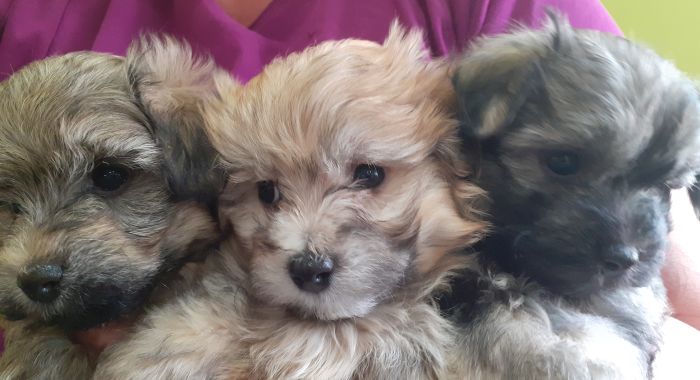Pandabears Breeding Philosophy

Pandabear Kennels Breeding Program
Production of good pups relies on both genetics and environment. Breeding dogs must be sound mentally and physically. Testing for health problems is vital in establishing a line of dogs to be used for breeding. Our minimum standards for health testing are those outlined in the Canine Health Information Program or https://ofa.org/chic-programs. We test OFA for hips, elbows, heart, patellas(knees). We use the CAER program for eye testing by a Canine Ophthalmologist and the BAER hearing test.
Breeding dogs should also be good examples of the breed and it is the reason that we go to dog shows. Dogs are judged according to a Breed Standard which is created by groups of dog fanciers. Dog showing ensures that our breeding stock has good conformation(creating a durable dog with fewer health issues), sound temperament and looks like the breed. We are big supporters of responsible dog breeding and especially Preservation Breeding, where we breed to preserve the characteristics that make our breed what it was designed to be. Click here for an article by a well known podcaster and dog handler describing preservation breeding. Dogs shows also allow us to meet other breeders and learn from mentors of the breed.
As a dog trainer, I cannot stress enough how the early environment affects the personality and confidence of a puppy. We raise our pups underfoot in our busy house. For the first three to four weeks they are kept in a quieter room with their mother and visits from our other dogs if mama allows. Around 4 weeks, we put the pups in a corner of our kitchen to get maximum exposure to sounds etc. We begin housetraining using a litter box and wood pellets. Pups go back to their quiet room at night to encourage a good sleeping routine.
At 6 to 8 weeks, we begin to take pups outside for potty breaks(weather permitting). We also take pups for car rides to discourage car sickness. Pups usually visit the senior's home at least once or twice during this time. At 5-6 weeks, we introduce collars and feeding solids. Mom still visits but by this time she is happy for the break. We frequently let the pups out the pen for playtime with our older dogs. We encourage people to visit from 5 weeks on and we always do lots of cuddling and passing around pups. At 8 weeks our vet does health examinations and gives the first vaccines. Pups are ready to go to their new homes after that.
---> <---
